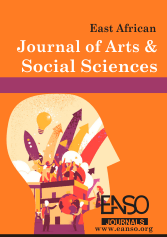Leveraging Wikis in English Language Teaching: Bridging the Gaps in the Traditional Methods of Instruction
Abstract
The integration of digital technologies in education is gradually transforming the landscape of language teaching and learning, offering opportunities for innovation and improvement. However, Traditional Methods of Instruction (TMIs) in the English language are constrained in terms of students’ engagement and fostering communicative competence. The limitations of TMIs have prompted educators to seek alternative pedagogies. Technology-enhanced instruction is viewed as one avenue to revitalize English language teaching. Among these technologies, Wikis have emerged as a promising tool for promoting interactive and student-centred learning environments. The study on which this paper is based investigated the effectiveness of Wikis as a pedagogical tool in bridging gaps in TMIs in English language teaching. Grounded in Salmon's Five-Stage Model, this study integrated Wikis into English language instruction with 20 secondary school students. The Wiki intervention was tested through two iterations. The findings revealed that Wiki-based instruction can effectively address some of the limitations in TMIs by fostering collaborative learning and peer feedback, promoting self-directed learning and autonomy by enhancing all four language skills. The study contributes to the growing body of research on technology-enhanced language learning by highlighting Wikis' potential to enhance English language teaching
Downloads
References
Abeer, S. (2020). Wikis in Language Learning: Merits and Limitations. Journal of English Language Teaching and Applied Linguistics, 2(3), 79-88.
Baker, W. (2020). Intercultural language teaching and learning. In J. W. Tollefson & M. R. Hawkins (Eds.), Handbook of language and superdiversity (pp. 357-375). Wiley.
Bali, M. (2020). Wiki Education’s impact on student learning and equity. Journal of Educational Technology Development and Exchange, 12(1), 1-16.
Benson, P. (2011). Teaching and researching autonomy in language learning. Pearson.
Chapelle, C. A. (2019). The spread of English and its implications for language teaching. Language Teaching, 52(2), 141-155.
Ellis, R. (2019). Understanding second language acquisition (3rd ed.). Oxford University Press.
Gallagher, M., & Knox, J. (2019). Global technologies, local practices. Learning, Media and Technology, 44(3), 225– 234. https://doi.org/10.1080/17439884.2019.1640741
Gao, X. (2020). Innovations in English language teaching. Routledge.
Godwin-Jones, R. (2018). Second language writing online: An update. Language Learning & Technology, 22(1), 1–15. https://dx.doi.org/10125/44574
Johnson, D. W., & Johnson, R. T. (2018). Cooperative learning and second language teaching. In D. W. Johnson & R. T. Johnson (Eds.), Learning together and alone (pp. 173-192). IntechOpen.
Kabugo, D. (2020). Utilizing Open Education Resources to Enhance Students’ Learning Outcomes during the Covid‐19 schools lockdown: A case of using Kolibri by selected government schools in Uganda. Journal of Learning for Development, 7(3), 447–458. https://eric.ed.gov/?id=EJ1280825
Kasper, G. (2019). Studying speaking: Research approaches to second language speech. Routledge.
Kelly, M. (2012). Second language teacher education. In J. Jackson (Ed.). The Routledge Handbook of Language and Intercultural Communication, (pp.409-421). Routledge.
Kessler, G. (2018). Technology and language teaching. In A. J. Kunnan (Ed.). The Cambridge Guide to Research in Language Teaching and Learning (pp. 347-360).
Lai, C. (2020). Technology-enhanced language learning: A research synthesis. Language Learning & Technology, 24(1), 1–20.
Larsen-Freeman, D. (2019). On language learner agency. Modern Language Journal, 103(S1), 76-84.
Lee, L. (2019). Wiki-based collaborative writing in ESP courses. Journal of Language and Linguistics, 18(3), 553-570.
Magers, B. (2020). Using Wikis to promote collaborative learning in the language classroom. TESL-EJ, 23(4), 1-15.
Mager, R. F., & Perez, G. (2015). Personalized learning in the classroom. Journal of Educational Multimedia and Hypermedia, 24(1-2), 5-20.
Miyashita, N. (2020). Learner autonomy and learner-centered instruction. In C. A. Chapelle (Ed.). The concise encyclopedia of applied linguistics (pp. 1-5). Wiley.
Murray, N. (2020). Understanding English language learners. Pearson.
Richter, T. (2019). Wiki-based language learning. Language Learning & Technology, 23(1), 140-155.
Salmon, G. (2002). E-tivities: The key to active online learning. Routledge.
Salmon, G. (2004). E-moderating: The Key to Teaching and Learning Online. Taylor & Francis. https://doi.org/10.4324/9780203465424
Tomlinson, B. (2020). Research and practice in language teaching. In D. Nunan (Ed.), The Cambridge Guide to Second Language Assessment (pp. 397-417). Cambridge University Press.
Wenger, E. (1998). Communities of practice: learning, meaning, and identity. Cambridge University Press.
Zimmerman, B. J. (2013). From cognitive modeling to self-regulation: A social cognitive perspective. Educational Psychology Review, 25(1), 133-147
Copyright (c) 2024 Haroun Yassin, Josephine Najjemba, Rebecca Nambi, Dorothy Sebbowa Kyagaba

This work is licensed under a Creative Commons Attribution 4.0 International License.




























